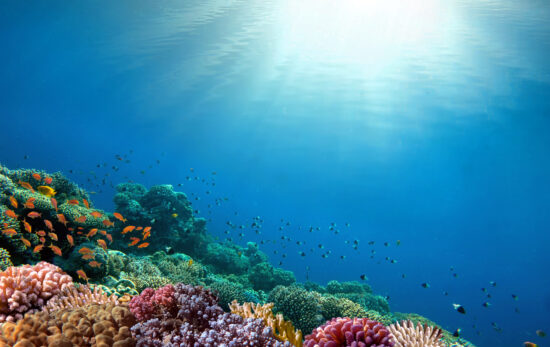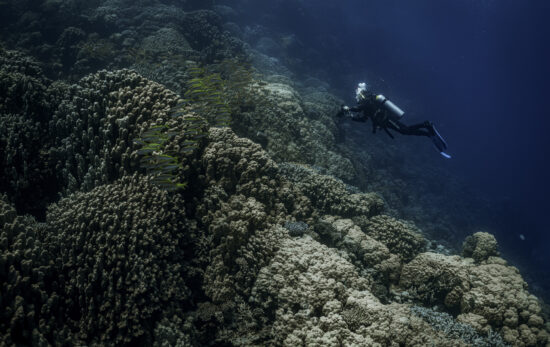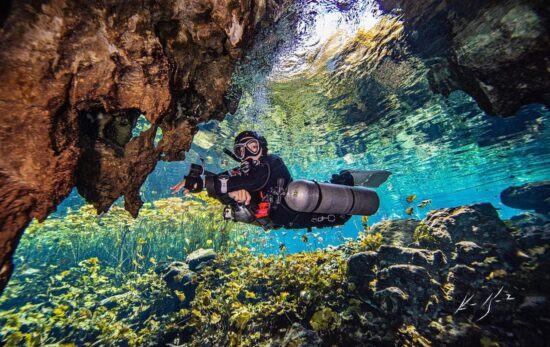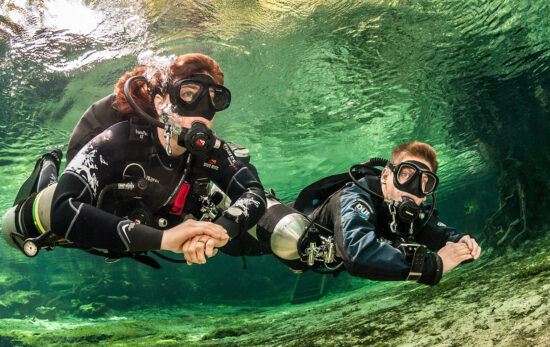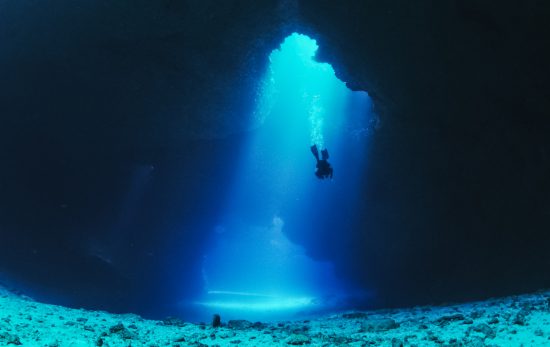In this article, we will look at threats to the cave environment, and how divers can help to protect it for the future.
Caves are made of rock, so how much damage can a diver do?
Sadly, divers can do irreparable cave environments. We all know that damaging a coral reef can undo decades of growth, but did you know that if you damage a cave it is unlikely to ever be replaced or repaired!? Fragile rock, fossilized remains and soft sediments have formed over such long periods of time that any impact you make will be visible for thousands of years.
Each cave has its own unique beauty as well as scientific value, and the potential to reveal further information in the future. Cavern and cave divers, as lovers of this environment, should be Torchbearers and ensure they do nothing to deface or damage it.
What can cave divers do to prevent damage to cave environments?
We can start with the usual diving rule: take nothing but photos, leave nothing but bubbles, kill nothing but time. But, we also have some specific guidelines to help minimize our impact on cave environments:
- A person selects and enters a cave by choice; the cave cannot discriminate between the trained or untrained, the careful or careless, and the respectful or reckless.*
- Leave the cave as it was found; refrain from casual collecting of any kind.*
- Make sure your skills are matched to the cave you are diving.*
- Attempt to remove rubbish when possible and leave none of your own.*
- Do not damage the cave; your impact will be visible for thousands of years to come.*
- Develop an awareness of sensitive cave structures and features:
- Goethite/ phreatite formations
- Sediment formations
- Delicate formations
- Cave fauna and bacteria colonies
- Speleothems; stalactites, stalagmites, etc*
- Take extra care if you are using DPVs or staging cylinders or other equipment.
- Don’t forget that all land is owned. Only dive in places where the land owner has given their permission. Diving without permission gives cave divers a bad name, jeopardizes delicate negotiations for future access and, in some countries, can result in legal action, confiscation of equipment and/or vehicles.
Wider Threats to Cave Environments
Sadly, as with any environment, the cave environment is under pressure from outside sources.
Different regions have different problems, but a few examples are:
- A growing population’s demand for water can put pressure on cave systems. If too much water is taken from cave systems, the water pressure drops and cave collapses become more likely.
- Caves suffer from water quality problems similar to that of lakes and rivers where agricultural and industrial processes and by products can cause contamination.
- Waste and sewage management in highly populated or tourist areas can also cause contamination.
- Building projects in areas where cave passages are only a short distance below the surface can cause damage, contamination and destabilization.
Most of us don’t have any direct involvement with the organizations and companies that threaten the cave environment, but developing an awareness of the issues is essential so that we can make educated choices on everything from where we stay on holiday to choosing our political representatives.
The final word comes from my cave instructor trainer who not only introduced me to caves and a lifelong love affair with cave diving but has also lived with me ever since. Whether diving in a cavern or cave or even visiting a dry cave, he used one phrase to encompass both our attitude and actions; he taught me to Cave Softly.
*References: From the NSS (National Speleological Society) Cave Conservation guidelines. The NSS is an organization dedicated to caves, the study, enjoyment, exploration and protection of them.
This article was written by Vikki Batten – a PADI International Ltd Technical Consultant and cave diver.


